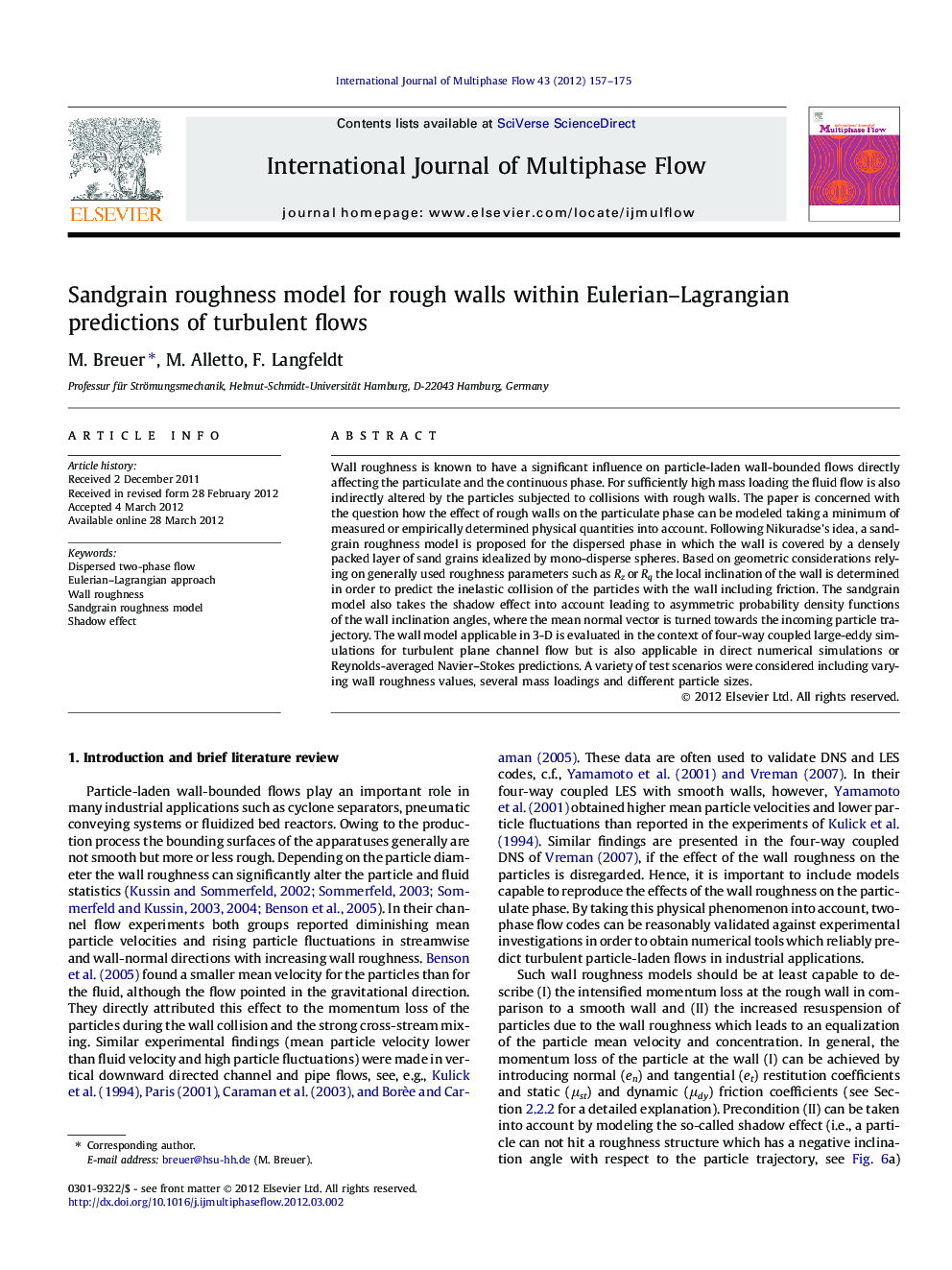| Article ID | Journal | Published Year | Pages | File Type |
|---|---|---|---|---|
| 666745 | International Journal of Multiphase Flow | 2012 | 19 Pages |
Wall roughness is known to have a significant influence on particle-laden wall-bounded flows directly affecting the particulate and the continuous phase. For sufficiently high mass loading the fluid flow is also indirectly altered by the particles subjected to collisions with rough walls. The paper is concerned with the question how the effect of rough walls on the particulate phase can be modeled taking a minimum of measured or empirically determined physical quantities into account. Following Nikuradse’s idea, a sandgrain roughness model is proposed for the dispersed phase in which the wall is covered by a densely packed layer of sand grains idealized by mono-disperse spheres. Based on geometric considerations relying on generally used roughness parameters such as Rz or Rq the local inclination of the wall is determined in order to predict the inelastic collision of the particles with the wall including friction. The sandgrain model also takes the shadow effect into account leading to asymmetric probability density functions of the wall inclination angles, where the mean normal vector is turned towards the incoming particle trajectory. The wall model applicable in 3-D is evaluated in the context of four-way coupled large-eddy simulations for turbulent plane channel flow but is also applicable in direct numerical simulations or Reynolds-averaged Navier–Stokes predictions. A variety of test scenarios were considered including varying wall roughness values, several mass loadings and different particle sizes.
► Four-way coupled Euler–Lagrange predictions of particle-laden flows over rough walls. ► Sandgrain roughness wall model developed for the particular phase (DNS/LES/RANS). ► New wall collision model purely relies on standard roughness parameters. ► Shadow effect leads to asymmetric PDFs of the wall inclination angles. ► Good agreement of LES results with experimental data for a wide range of parameters.
